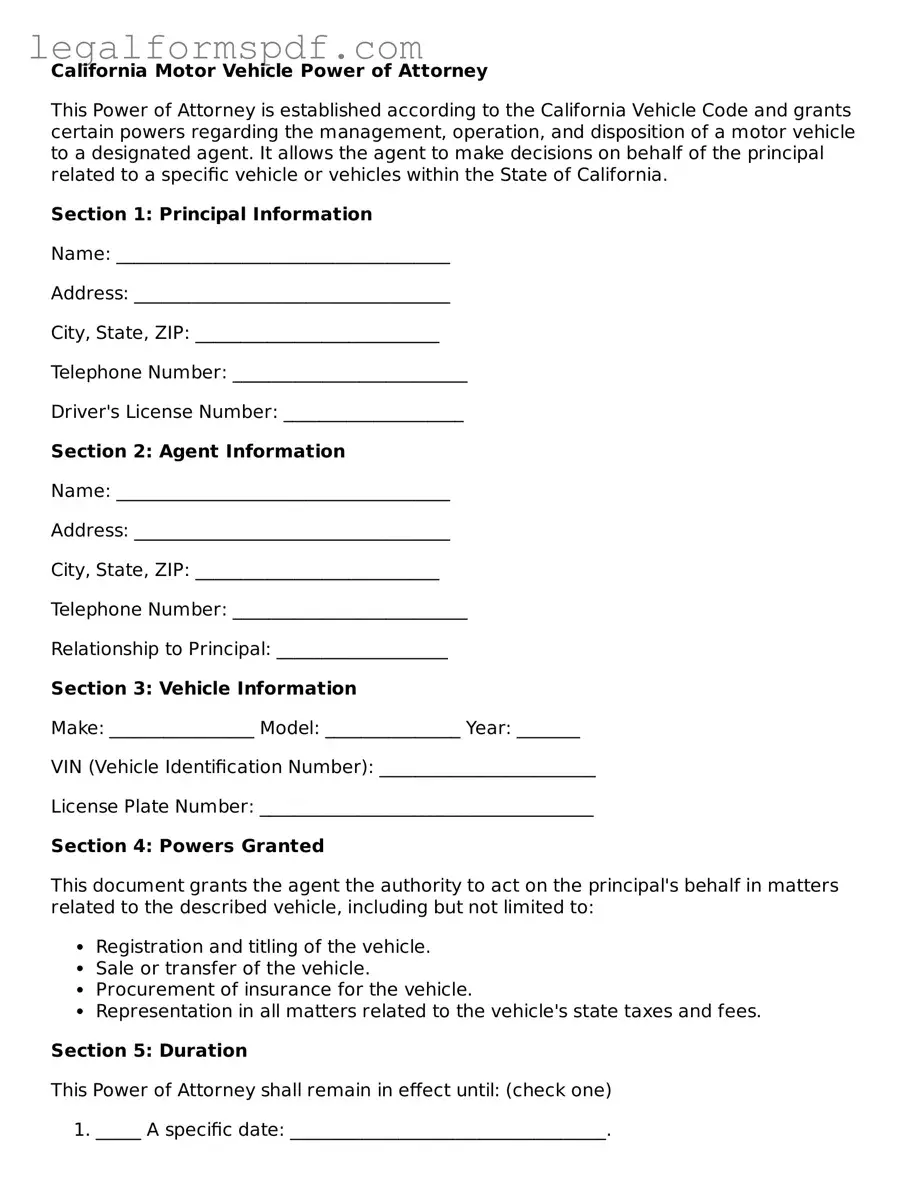California Motor Vehicle Power of Attorney
This Power of Attorney is established according to the California Vehicle Code and grants certain powers regarding the management, operation, and disposition of a motor vehicle to a designated agent. It allows the agent to make decisions on behalf of the principal related to a specific vehicle or vehicles within the State of California.
Section 1: Principal Information
Name: _____________________________________
Address: ___________________________________
City, State, ZIP: ___________________________
Telephone Number: __________________________
Driver's License Number: ____________________
Section 2: Agent Information
Name: _____________________________________
Address: ___________________________________
City, State, ZIP: ___________________________
Telephone Number: __________________________
Relationship to Principal: ___________________
Section 3: Vehicle Information
Make: ________________ Model: _______________ Year: _______
VIN (Vehicle Identification Number): ________________________
License Plate Number: _____________________________________
Section 4: Powers Granted
This document grants the agent the authority to act on the principal's behalf in matters related to the described vehicle, including but not limited to:
- Registration and titling of the vehicle.
- Sale or transfer of the vehicle.
- Procurement of insurance for the vehicle.
- Representation in all matters related to the vehicle's state taxes and fees.
Section 5: Duration
This Power of Attorney shall remain in effect until: (check one)
- _____ A specific date: ___________________________________.
- _____ The occurrence of a specified event: _________________.
- _____ It is revoked by the Principal in writing.
Section 6: Signature of Principal
I, _____________________________ (Principal), hereby grant the powers listed above to _____________________________ (Agent). I affirm that I have the authority to designate this power of attorney and that all information provided is accurate to the best of my knowledge.
Date: _____________________
Principal's Signature: ___________________________________
Section 7: Acknowledgment by Agent
I, _____________________________ (Agent), accept the designation of power of attorney granted by _____________________________ (Principal). I commit to acting in the Principal's best interests in matters related to the designated vehicle or vehicles.
Date: _____________________
Agent's Signature: ___________________________________
Section 8: Witness or Notary Acknowledgment (If Required)
This section is to be completed by a notary public or other authorized official if required by state law or as desired by the Principal for additional validation of this document.
